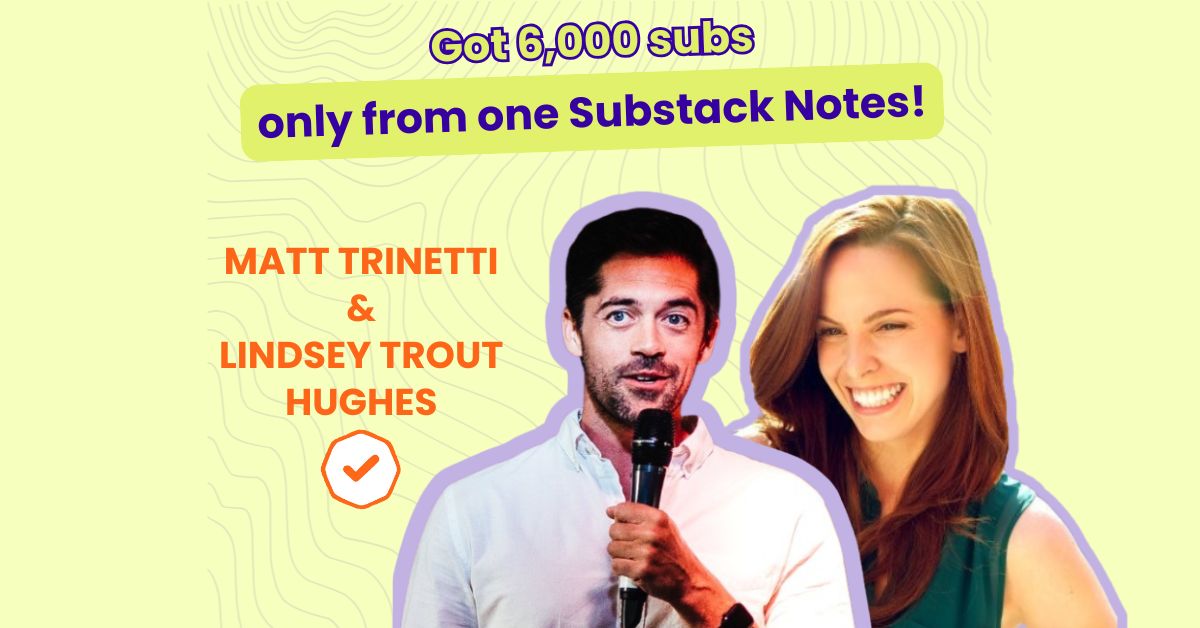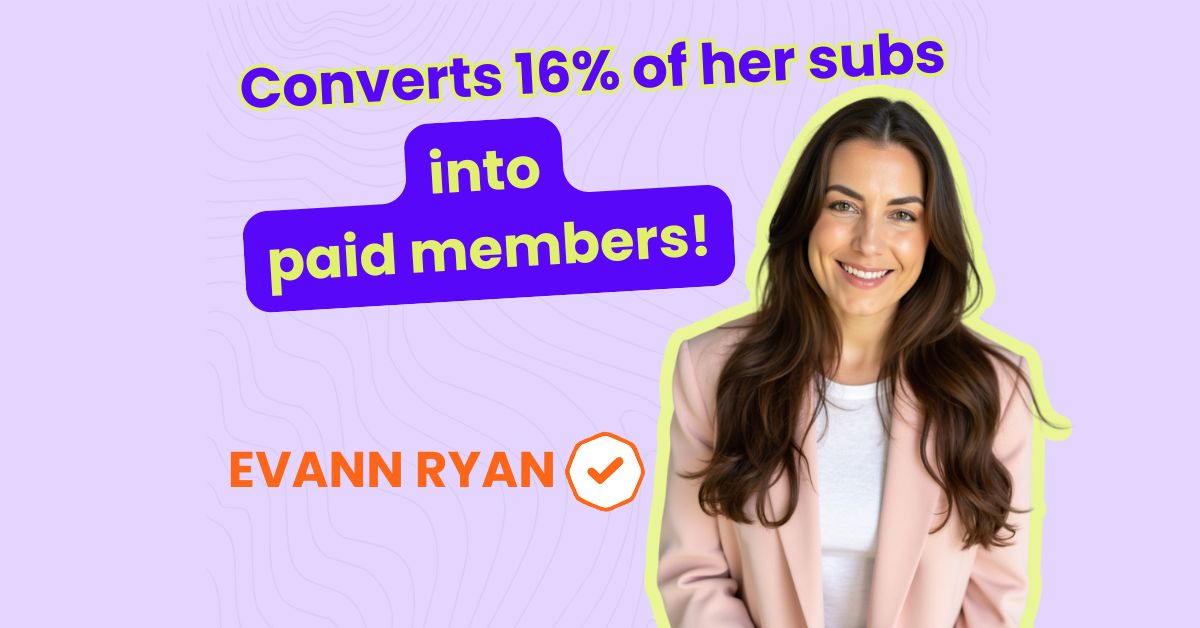Interview Date: April 6, 2025
Table of Content
- Meet Jesse Colombo
- Newsletter Identity Card
- Tools he uses to run his newsletter
- How he started his newsletter
- How he grew over 5,500 subcribers
- His paid subscription strategies to become a Substack bestseller
- Personal & professional impact of running a newsletter
MEET THE CREATOR
Jesse Colombo is an independent economic analyst and investor specializing in precious metals, and a strong advocate for free markets and sound money.
At just 18 years old, he launched a website called Stock Market Crash! to warn about the looming U.S. housing bubble—a bold move that quickly established him as a rising voice in economic analysis. Within a year, his website was ranking #1 on Google for key financial terms, earning recognition in the LA Times as one of the most highly trafficked sources on the topic.
When the 2008 crash unfolded exactly as he predicted, The London Times acknowledged him as one of the few who saw it coming at the age of 22. This early success propelled his career as a financial analyst and media personality, growing his social media following to over 200,000 and securing an 11-year tenure as a Forbes contributor.
In September 2024, Jesse launched The Bubble Bubble Report, a newsletter focused on precious metals investing and analysis. In just six months, he grew it to over 5,500 free subscribers and more than 250 paid members—an impressive conversion rate in such a short time!
In this interview, he talked about
- Why he started a newsletter as a precious metals analyst
- How his 200K+ social media followers contributed to his newsletter growth
- The strategies that helped him reach 260+ paid subscribers within just six months
- The professional impact of running a newsletter
Enjoy!
NEWSLETTER IDENTITY CARD
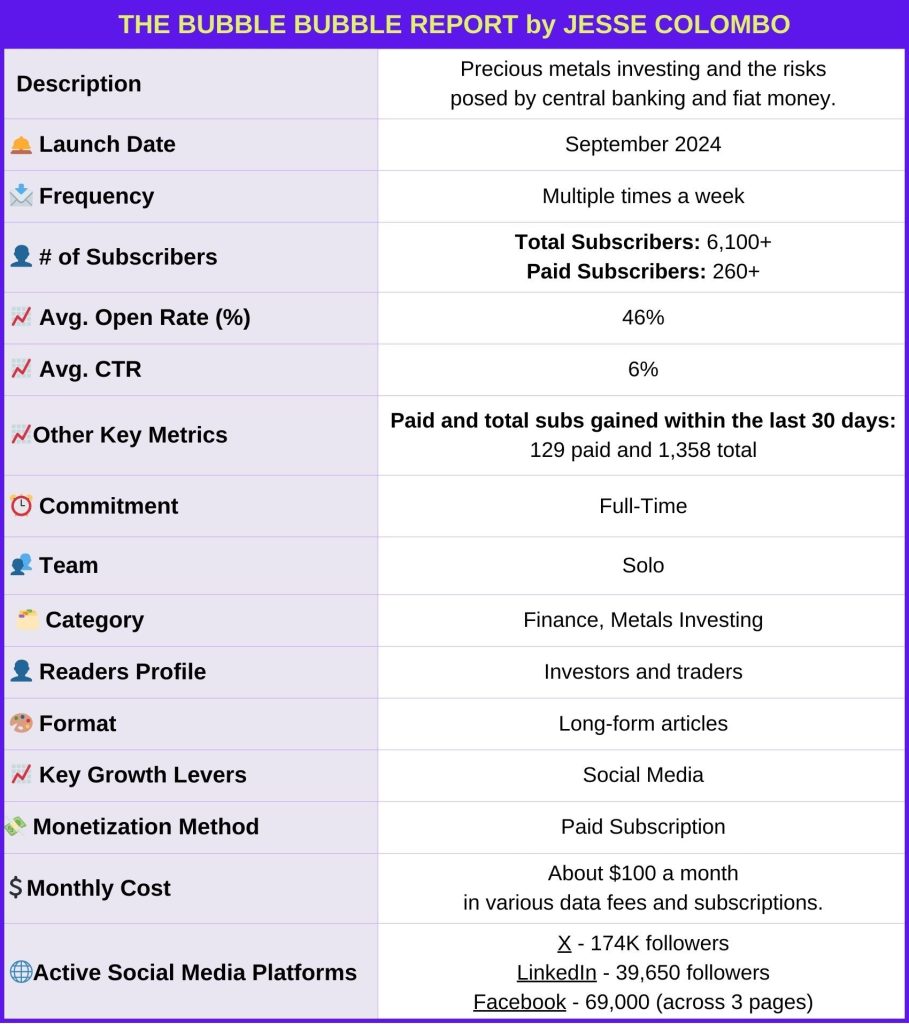
TOOL STACK
- ESP: Substack
- Design of visuals design: Microsoft Excel and TradingView (To create charts)
START
You are a precious metals analyst, which is a unique profession among other newsletter operators. How and why did you start “The Bubble Bubble Report” in the first place?
I launched The Bubble Bubble Report on Substack in September 2024, and it quickly gained momentum—attracting over 5,000 subscribers within just a few months and being recognized by Substack as one of its bestselling newsletters.
I chose to specialize in precious metals investing and analysis because I believe the world is currently experiencing an unprecedented debt and asset bubble—far greater than the one that led to the 2008 global financial crisis—that will ultimately lead to a global depression and hyperinflation.
In my view, gold, silver, and to some extent mining stocks, are among the few assets that not only offer protection in such a scenario but also present an opportunity to profit. Naturally, I’ve focused my expertise on the assets I believe are best positioned to weather the economic storm I see coming.
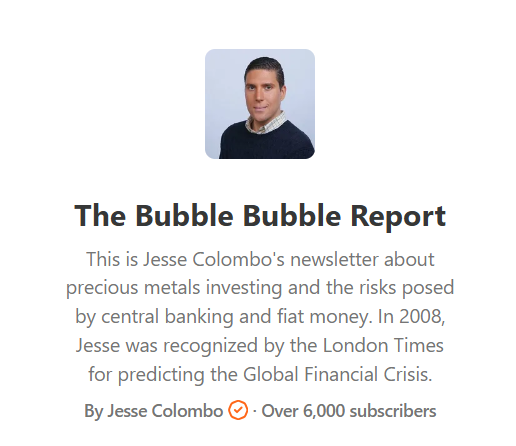
GROWTH
You grew your subscriber number from 0 to 5,000 in approximately six months. This is impressive. Which strategies did you use to grow over 5,000 subscribers?
0 – 1,000 Subscribers
I gained my first thousand subscribers within just a few weeks, largely thanks to a public announcement across all my social media platforms—including X, LinkedIn, Facebook—as well as through Substack Notes.
Much of that early traction came from long-time followers who were excited about my new venture and eager for more high-quality content. The timing also worked in my favor: gold and silver were surging, fueling widespread enthusiasm in the industry and driving heightened interest in precious metals-related analysis.
I also discovered just how valuable it is to swap recommendations with other high-quality Substack newsletters in your niche. It’s a highly effective way to generate a steady, reliable stream of new subscribers over time.
1,000 – 3,500 Subscribers
Reaching my first 3,000 subscribers happened relatively quickly—within about two months. During that time, I was consistently publishing in-depth free reports on gold and silver, many of which went viral.
Each report included clear calls to action, encouraging readers to subscribe to my newsletter, either as free or paid members.
I also submitted these reports to well-known websites in the precious metals space that accept contributor content, which significantly expanded my reach. Those reports included the same calls to action, helping drive even more subscribers.
Meanwhile, I continued using Substack Notes to share engaging snippets—such as compelling charts and data points—with links back to the full reports. From September through late October, the timing was ideal, as gold and silver were still surging, giving my content added momentum.
3,500+ Subscribers
Around the 3,000-subscriber mark, however, I hit a bit of a wall—due to a mix of factors that, to this day, remain somewhat unclear.
Momentum had been strong through late October, likely driven by uncertainty surrounding the upcoming U.S. presidential election, which tends to boost interest in gold and silver as safe-haven assets.
But in early November, as it became increasingly clear that Donald Trump was likely to win—and especially after his official victory—both gold and silver prices pulled back. Almost immediately, I noticed a shift in sentiment across the precious metals space, including among my own readers and subscribers.
In the days and weeks following the election, a noticeable number of paid subscribers abruptly unsubscribed, which was both surprising and confusing given the strong momentum I had built up until that point.
After taking some time to reflect, my working theory is that many of these individuals were enthusiastic Trump supporters who, in the wake of his victory, felt a renewed sense of optimism. That emotional shift may have led them to lose interest in safe-haven assets and content they perceived as “bearish,” like mine—believing instead that Trump was about to “Make America Great Again.”
Fortunately, my revenue only plateaued for a couple of months, while my total subscriber base continued to grow—albeit at a slower pace than before the election. I stayed focused, continued producing high-quality content, and reassured my readers that the bullish case for gold and silver remained firmly intact.
I emphasized that, despite the optimism surrounding Trump’s victory, the underlying economic issues—massive debt and structural imbalances—had grown too severe for any one president to resolve at this stage. The crisis I’ve been warning about, I argued, was still very much on the horizon.
Thankfully, the majority of both free and paid subscribers stuck with me—and I’m truly grateful for that. Before long, gold and silver began surging again, just as I had anticipated. Recession risk also started to rise, and the initial wave of euphoria surrounding Trump’s presidency began to cool—all of which helped create a favorable environment for my newsletter to regain momentum and continue growing.
Around that time, I also began experimenting with periodic emails to free subscribers, highlighting the value of the paid tier and showcasing sample content. That strategy proved effective, leading to a steady increase in paid conversions.
You have a huge audience on X with 174,000 followers! How does your X account contribute to your newsletter growth?
While I’d be lying if I said it wasn’t a factor, the truth is that it’s not as impactful as many might think.
The reason is that links to external content—like Substack newsletters—are heavily suppressed on X, unlike in the earlier days of Twitter, which was fantastic for driving traffic to my blogs and columns. I recently ran an A/B test and discovered that posts containing a link saw a staggering 94% drop in impressions compared to posts without links. So unfortunately, X has become far less effective for promoting newsletter content—though not entirely useless.
There are workarounds—such as placing the newsletter link in a comment beneath the main post—but I’m not a fan of that approach. It’s clunky, creates a poor user experience, and many people either miss the link entirely or don’t bother to look for it.
Unfortunately, that’s the reality of social media today: platforms are now oriented to keep users on-site, which ends up penalizing creators of long-form content like myself. It’s a constant source of frustration—and one of the key reasons I’ve shifted my focus toward building my email list through Substack, rather than investing heavily in growing my social media following at this stage.
Regardless, I still actively promote all of my Substack content—both free and paid—on X, which drives a steady stream of traffic and new subscribers. I share compelling charts and interesting data points, then invite my followers to read the full Substack post for deeper insights.
Regarding growth efforts, what would you do differently if you had a chance to start over?
It’s only been six months, and by any measure, I’d call it a resounding success. That said, I’ve learned how important it is to truly understand the Substack platform and how it works.
If I could go back, I’d spend more time upfront going through their how-to resources and best practices. I also would have started emailing free subscribers earlier, regularly highlighting the benefits of upgrading to a paid subscription and encouraging them to make the switch.
You’d be surprised how many people are willing to upgrade—especially if you offer genuine value in those emails, like access to bonus content, rather than making it feel like a sales pitch.
Overall, I still feel like I have a lot to learn about Substack and the paid newsletter space, but I’m starting to get the hang of it. I plan to keep learning, testing new strategies, and most importantly, delivering high-quality content as the foundation for continued growth.
MONETIZATION
Your newsletter is a Substack Bestseller with 260+ paid subscribers. When did you launch your paid subscription and how did you decide that it was the right time for you to activate it?
I personally know creators who have grown their paid subscriber base into the thousands, and that’s exactly what I’m aiming for. I’m confident I can get there with persistence, continued learning, and a commitment to delivering real value.
I soft-launched the Substack in September after leaving a role at a company in the precious metals industry. At first, it was a casual project—I made it fully free and intended to use it as a space to occasionally blog.
I didn’t yet realize its full potential. My original plan was to focus on writing financial books I had been wanting to publish for some time. But my younger brother, who’s pretty savvy, encouraged me to pursue the newsletter route instead—he was convinced it had real potential.
Honestly, I was skeptical. To his credit, he had been urging me to do this for six years—and looking back, I can only imagine where I might be now if I had listened sooner!
After publishing a few free reports and seeing them gain serious traction, I was surprised to find that people were pledging money—even though I hadn’t asked for or expected it. That gave me the idea to test out the paid model a few weeks later in October, which I now consider my official launch.
I was blown away by the response from readers who were not only engaging with my work but willing to pay for my insights.
That’s when it clicked—I realized this could truly be worth my time. So I made a commitment to give it six focused months and see how far I could take it, setting aside my original plan to write financial books. Looking back to where I was in September, I never could have imagined how far the newsletter would come in such a short time.
Now, I’m genuinely excited to see where it goes over the next six months, two years, five years, and beyond. I plan to keep putting in the work, and the sense of purpose and renewed excitement it’s brought to my career is exactly what I have been searching for.
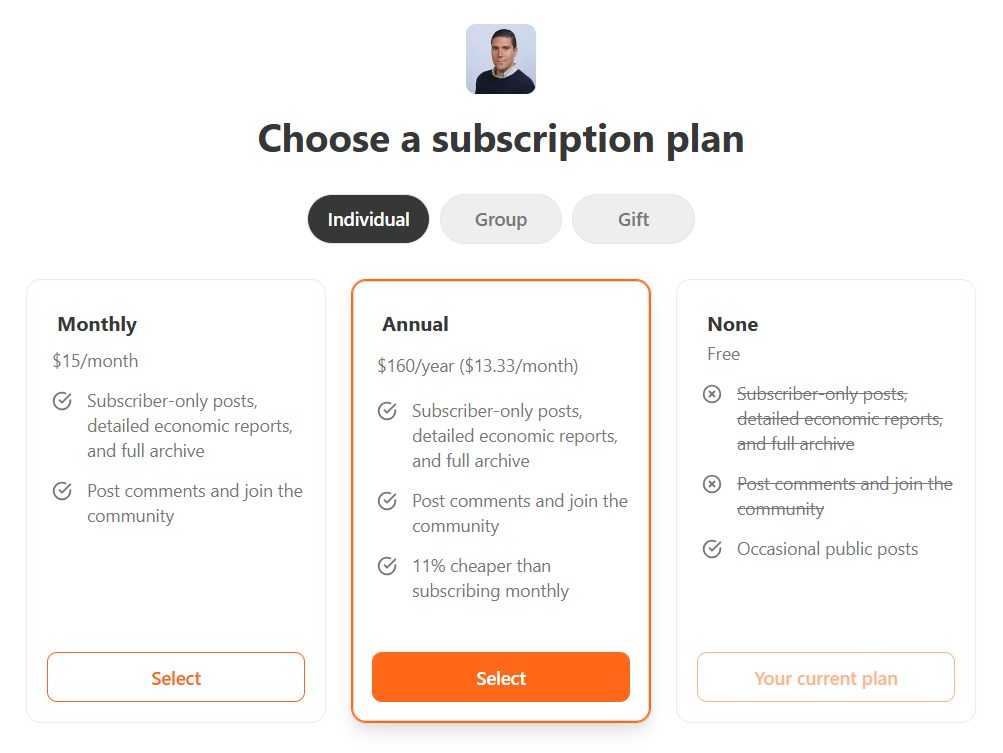
How did you gain your first 10 paid subscribers?
I announced across my social media platforms and through Substack Notes that I was now offering a paid newsletter featuring premium content—specifically, in-depth economic reports. The response was strong, with a solid number of people signing up quickly.
I also began to notice a pattern: each time I published a piece of paid content, a portion of free subscribers would upgrade so they could access it—and many of them remained paid subscribers afterward.
This confirmed something important for me: writing compelling content with engaging, curiosity-driven titles is key to encouraging clicks and driving conversions.
What are your strategies to convert free subscribers into paid ones or gain new paid subscribers?
As I’ve been saying, I email free subscribers with content-rich, engaging previews—essentially giving them a taste of what paid subscribers receive. At the end of these emails, I invite them to upgrade if they find the content valuable and want to have access to more of it.
I take a similar approach on social media, where I share eye-catching charts and compelling insights, noting that they’re part of a larger, in-depth economic report available to paid subscribers. This strategy consistently leads to conversions, with a percentage of viewers upgrading nearly every day.
Among various strategies you’ve tried so far, which ones work best to grow your paid subscribers list?
It was a combination of actions, as you can imagine, but the most effective was creating viral content that had broad appeal – in my case it was free, detailed economic reports that got heavy circulation on social media that helped build a lot of initial visibility for my newly launched newsletter. Here’s an example.
If you give something of great value for free, people appreciate that and many will subscribe. And even if they sign up as a free subscriber initially, as they become familiar with your content over time, there is a high likelihood that many will convert into paid subscribers.
How did you decide what to offer differently to paid subscribers to make it compelling for them to join as paid members?
That’s a great question, and it’s something I’m still actively working through. But I do feel like I’m getting closer to striking the right balance. My goal is to deliver real, substantial value to paying subscribers while still respecting my free audience—without overwhelming them with paywalls or making them feel left out.
As I’ve mentioned before, many of today’s free subscribers often become tomorrow’s paying ones, so it makes sense to keep them engaged and offer them meaningful content as well—leave a little meat on the bone, so to speak.
I generally aim to publish three to four in-depth reports or market updates each week for paid subscribers. In addition, about once a week, I release a high-quality free report for all subscribers—something with strong viral potential that can help attract new readers. I also submit those free reports to industry websites that accept guest contributions, which typically brings in solid traffic and a steady stream of new subscribers.
The main challenge is the sheer volume of content required—balancing valuable content for paid subscribers while also producing free material to drive growth. But I see the long-term potential in this model, so I’m putting in the extra hours to make it work.
Eventually, as the paid subscriber base grows, you reach a point where you can ease off the growth push a bit and focus more on consistently delivering great content to retain your core audience.
What are your biggest lessons from running a successful paid subscription?
I’ve often heard the saying that all you need is 1,000 true fans—dedicated supporters who genuinely value your work—to make a living doing what you love. And through the paid newsletter model, I’m seeing that idea come to life.
Just 1,000 paying subscribers at $15 a month translates to $180,000 a year—not bad at all. Especially when you consider the flexibility: no traditional boss (though you could say you have 1,000 micro-bosses!), no daily commute, no need to live in an expensive city, and the freedom to work from virtually anywhere.
IMPACT & LEARNINGS
How did building The Bubble Bubble Report newsletter contribute to your life professionally and personally?
Before discovering and truly leaning into the paid newsletter model, I struggled to monetize my passion for content creation. I had partnered with larger companies on several occasions, only to realize I was being used primarily as a lead generator—while my core mission of warning people about the extreme financial risks ahead was completely disregarded. Those experiences left me disillusioned.
There were moments when I seriously considered giving up on content creation altogether, thinking the space was oversaturated and that creators were a dime a dozen. But the paid newsletter model proved otherwise—it validated my belief that there was real value and potential in what I had to say.
For that, I’m incredibly grateful. My only regret is not discovering this path ten years earlier.
What would you do differently if you had a chance to start over The Bubble Bubble Report?
Thankfully, not much—I’m still only six months in. What I do know is that I want to keep learning, keep growing, and continue sharpening my expertise—not just in the Substack platform and the world of paid newsletters, but also in creating increasingly sophisticated and impactful content.
What would it be if you had the right to give one piece of advice to aspiring newsletter creators?
Don’t underestimate the potential of paid newsletters—or how many people are willing to pay for content they find valuable.
Self-doubt is normal, but my advice is to push through it and take the leap: launch your newsletter, create high-quality, unique content, promote it consistently, and give it time to grow. You might be surprised by just how far it can take you.
3 Popular The Bubble Bubble Report Issues
- 24 Reasons Why I Don’t Believe in Bitcoin & Crypto
- Is Gold Following Its 2007-2008 Bullish Trajectory?
- Why the U.S. Stock Market Bubble Is on Shaky Ground
Where to find Jesse Colombo
- “The Bubble Bubble Report” Newsletter
- X

